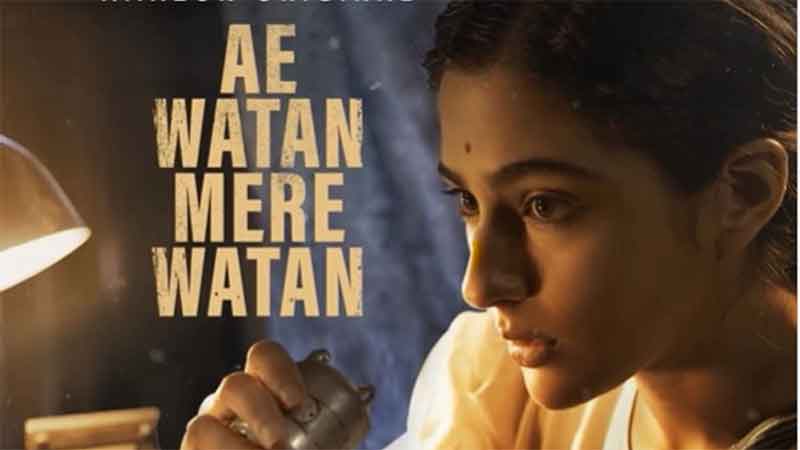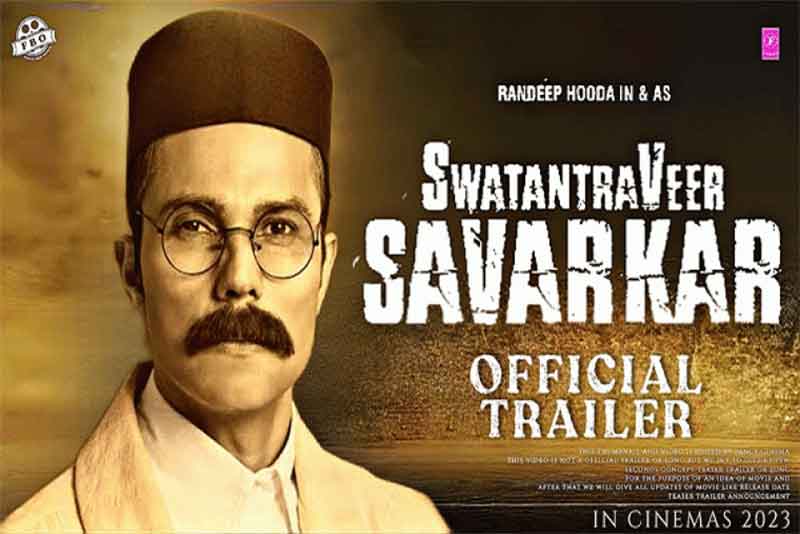
Raj Kapoor arguably is the most defining character in the history of Bollywood who took the Indian film industry to another spectrum. It was Raj who enabled the film world to reach the broad masses and identify with them. He donned the Charlie Chaplinesque form, classically transplanting or grafting it to Indian conditions. As a director and actor he revealed shades of genius .No actors in his time understood or mastered the mannerism of the common man as Raj. Raj laid the base from which socialist themes could be built in Indian films. Charlie Chaplin championed the cause of the working class or oppressed in his early films. No actor better imitated Chaplin as Raj.
The best films of Kapoor included ‘Awaara’, ‘Shree 420″, ‘Barsaat’,’Jagte Raho”,’Sangam’ ‘Mera Naam Joker’ amd ‘Anari.’He repeatedly portrayed the tramp character of Raju ,imitating Charlie Chaplin with a unique subtlety of its own kind. I can very rarely conceive a character who could reflect such a dramatic change in expression or mood in a single film like the hottest of summer days turning into the chilliest winter day., like a 360 degree transformation. Raj was genius in the ebb and flow of comedy and tragedy within a single film. With great insight he captured the psyche of the common man and adopted forms rooted in their very lives .His films struck a chord with social reality very intrinsically, portraying the injustices of capitalism. With the inventiveness of a genius he blended fiction with social reality to weave his plots. Raj Kapoor epitomised the life of a common man like few actors ever, in acting and direction.
AWAARA-HIS BEST EVER FILM
To me the best film he ever made was ‘Awaara’ where with the touches of a genius he knitted a plot of how environment shapes or turns a man’s life. It is ironic that Raj is sentenced by his own father in the climax. The movie perfectly blends humour and satire or romance with pathos with an ebb and flow that keeps the audience intrigued towards the end, With great directing and acting skill Raj portrays the frustrations of a common man and how the the inter-relation of a series of circumstances determine his fate. In most artistic style like an epic books scene changes were co-ordinated . Although a fiction story superbly depicts the evils of a capitalist society and the impact of environment. The movie reflects a Charlie Chaplinesque theme and the story reminds you of a Charles Dickens Novel. The life of a vagabond tramp is superbly portrayed by Raj Kapoor as ‘Raju’.Without doubt even if not ideological ,brilliantly bases itself on social reality.Raj Kapoor displays materiality in creating fiction based on the theme of the evils of an oppressive society.
Judge Raghunath is a wealthy district judge who convicts Jagga, a man whose father was a criminal, of rape on little evidence. The judge believes that “good people are born to good people, and criminals are born to criminals.” Jagga later escapes and kidnaps the judge’s wife Leela for revenge. When he finds out that she has just become pregnant, he releases her after four days and plans a different kind of revenge. The judge suspects that Leela was unfaithful to him with Jagga, and throws her out of the house.
She has a son, Raj, and they live in poverty as a result of being estranged from the father. As a child, Raj befriends Rita(played by Nargis) in school, but he is removed from the school rolls while trying to maintain a job, and Rita moves to another city. Even though they are separated, Rita remains in Raj’s thoughts. On the streets, Raj turns to a life of petty crime and finds a father-figure in Jagga, who helps him to become a talented criminal.
While planning a bank robbery with his friends, Raj realizes they need an automobile. He snatches a woman’s purse after she steps out of the car, but finds no keys, and pretends to pursue the thief to release suspicion from himself. After his elaborate act, he returns the purse to the woman, who is soon revealed to be Rita. Rita is now the warden of the Judge, who suspects that Raj is no good and eventually restricts Rita from seeing him. Raj and Rita, who is becoming a lawyer, eventually realize that they are the same childhood friends, and they fall in love. Raj tries to quit his life of crime, but his employers fire him when they find out that he was a thief.
Becoming desperate he goes back to Jagga for a money loan, but Jagga wants him to commit more crimes. Raj refuses, but steals a necklace from a man he meets on the street, not knowing it was the judge. When he gives the necklace to Rita for her birthday, she discovers that he is indeed a thief. Rita goes to Raj’s mother and finds out the whole truth about his life.
When Raj realizes that Jagga is responsible for his mother’s misery, he kills Jagga in a fit of rage. At his trial the judge in the case is Raghunath. Rita persuades him that Raj acted in self-defense. However, when Raj learns that the judge is his father, he escapes and attempts to kill him. Due to these actions, Raj is brought to another court, and is defended by Rita. In the end, Raj is sentenced to 3 years in prison for his crime, but Rita promises to wait for him.
SHREE 420-FILM MOST CONNECTED TO SOCIAL REALITY
For sheer exposure of the injustices of capitalism ‘Shree 420’ top s the list where with subtle nuances in acting and direction he portrays how the industrialists hoodwink the workers or camouflage the essence of their nature by projecting themselves as champions of welfare.Raj is virtually tricked into believing he is championing a people’s cause.
Shree 420 is the tale of a country boy, Raj (Raj Kapoor), from Allahabad, who travels to the big city, Bombay, by walking, to earn a living.
He falls in love with the poor but virtuous Vidya (Nargis), but is soon seduced by the riches of a freewheeling and unethical lifestyle presented to him by an unscrupulous and dishonest businessman, Seth Sonachand Dharmanand (Nemo) and the sultry temptress Maya (Nadira). He eventually becomes a confidence trickster, or “420,” who even cheats in card gambling. Vidya tries hard to make Raj a good man but fails.
Meanwhile, Sonachand comes up with another scheme to exploit poor people, whereby he promises permanent homes to them at just Rs. 100. The scheme pays off, as people start hoarding money for a home, even at the cost of other important things. Vidya’s contempt for Raj increases even more. Raj becomes wealthy, but soon realizes that he paid a very high price for it. When Raj discovers that Sonachand has no plans to fulfill his promises, he decides to make wrongs right.
Raj takes all the bond papers of the people’s homes and tries to flee Sonachand’s home, only to be caught by Sonachand and his cronies. In a scuffle that occurs, Sonachand shoots Raj dead. When people hear the shooting, they come and see Raj dead. Sonachand tells police that Raj was trying to flee after stealing money from his safe, hence Sonachand shot him.
Upon this, the ‘dead’ Raj springs back to life and using pure logic, proves Sonachand’s guilt. Sonachand and his partners are arrested, while Vidya happily forgives Raj. The film ends with Raj saying “Yeh 420 nahin, shree 420 hain”(These are not just con men, they are respectable con men).
JAGTE RAHO-HIS BEST EVER ACTING
However overall his best acting performance was in ‘Jagte Raho’ where he shed his traditional Chaplinesque image and enacted the role of a poor man struggling. With a most natural style he immersed into the very thick of the character ,giving overtones of the merciless poverty a labour was subjected to.It was a sheer attribute of Raj that he could bring such life to such a tragic role. He took sensitivity to a crescendo ,like the delicate touches of a surgeon on a patient. Even in intensity his acting reveals a sense of detachment. A film which reflects the injustice of society and its contradictions in a subtle manner.,without a complex plot.(Raj Kapoor)
A poor peasant (RajKapoor) from the village, who comes to the city in search of work, is looking for some water to quench his thirst. He unwittingly enters an apartment building, whose residents take him for a thief and chase him. He runs from one flat to the other trying to escape his predicament. Along the way, he witnesses many shady undertakings in the flats where he hides. Ironically, these crimes are being committed by the so-called “respectable” citizens of the city, who by day, lead a life totally in contrast to their nighttime deeds behind closed doors.
He is shocked by these events, and tries to escape by evading the search parties, that are patrolling the apartment building in search of the elusive thief. He is unfortunately seen, and people chase him to the roof of the building. He puts up a brave resistance, and then descends by the water pipes onto the porch of a flat. He goes in to find a young girl (Daisy Irani). She talks to him and kindles a self belief in the peasant, who determinedly tries to face the adversity waiting outside. But when he ventures out of the flat, he is surprised to find that nobody takes notice of him. He eventually leaves the apartment building, his thirst still unquenched. He hears a beautiful song and searching for its source arrives at the doorstep of a woman (Nargis) drawing water from a well. His thirst is finally assuaged.
However his most touching film ever ,which tragically failed in the Bollywood market was ‘Mera Naam Joker.’In many ways it was an autobiographical portrayal of Raj Kapoor’s own life where he symbolizes the pathos of a clown who makes the world laugh while secretly brushing the tears from his own eyes. No doubt the film contained some of the most artistic elements and soul searching scenes. However it virtually bogged down the audience with repeatedly projecting the symbol of a Joker inviting pity ,which made the movie monotonous .In terms of philosophy the movie was classical but it had a tendency to exaggerate emotion or over dramatise like showing the heart of a Joker break into pieces or earlier having a heart operation..Still no movie had background music , songs or romance that touched the core of your soul like ‘Mera Naam Joker. In my view it lacked the essence of a plot to give the movie a genuine life and ‘The Joker’ should have comprised only a part of what should have been another theme or story. Philosophically the movie depicted the essence of the soul of a man .In different circumstances he faces still his life depicts a continuous thread spiritually, even if it takes another form. Like his other classics the ingredients were not woven together to give such a sound symmetry or buoyancy .Still I feel Raj in acting was at his best, particularly when smiling with tears in the circus. I also complement that he has enacted the struggle and karge heartedness of a common man through the symbol of a Joker , struggling for a living , unlike many classics. In many ways the Circus scenes were a copy of Charlie Chaplin’s ‘The Circus.’
OTHER PERFORMANCES
I also feel Raj exuded great sensitivity in “Anari’ contrasting pathos and humour like a wheel and an axle. Pertinently he did not direct this film. Another great performance of his was in ‘Teesri Kasam’ with Waheeda Rehman where he projected innocence at a crescendo.
His best romantic leads were in films like ‘Barsaat’ and ‘Sangam’ where with a characteristic method of turning laughter into sadness, Raj reveals his flair for romance. His eyes virtually tell the story in many scenes.
The works of his that did not impress me were ‘ Raam Tera Ganga Meli’ where he sexually exploited women or ‘Jis desh Min Ganga Behtai Hein’ where he portrayed a crusader of the down trodden. Somehow he did not shed his tramp or ‘Raju’ image here .
EVALUATION OF RAJ KAPOOR
Overall I would rank Raj amongst the top 6 Indian actors of all .Arguably it was a weakness that he tried to imitate Charlie Chaplin but still in his own right he was versatile as a director and actor. He did not match the intensity of Dilip Kumar in acting but was perhaps the more malleable .Maybe Raj had a weakness in overacting or introducing element of melodrama beyond the boundaries.
I would personally rank Raj just a notch below Dilip Kumar as I feel the latter had to undertake a more challenging task in enacting tragedy or undertook a broader spectrum of roles. By a margin it was Dilip who had the higher intensity or conviction.
From a Socialist point of view I am critical of Raj Kapoor over-delving into regions of sentimentality and fantasy like a Charles Dickens novel and not putting adequate accent on Socialist realism. It is notable that in the 1970’s or 80’s he made no movie highlighting the misery of the Indian Industrial worker under the yoke of the exploitation of the industrialist or on the grim social reality pertaining in the rural areas .Instead he strongly induced sensuality of women in his films.In ‘Jis Desh Mein Ganga Behti hein ‘ he projected message of compromise when adressing villagers and dacoits ,failing to touch upon the socio-economic conditions that were the root cause of rebellion. In that light I rate the role of Satyajit Ray far more productive.
Why were Raj Kapoor’s films such super hits in Soviet Russia? Did Socialist realism induced before 1956 stifle the creative spirit within Soviet Union? Perhaps other film directors in the world lacked that crucial element of creativity of Raj Kapoor .It is pertinent that Raj Kapoor’s film struck a chord in a genuine Socialist Society..I wonder still whether China during the Cultural revolution would have allowed his films which although portraying the life of the common man posessed strong currents of reactionary overtones.Kapoor’s films similar to a Charles Dickens novel revealed a powerful element of sentimentality .Even his best films over delved into regions of fantasy and did not give adequate justice to Socialist realism. In that light I rate Satyajit Ray ahead or even Balraj Sahni as an actor.
It is also possible that Raj Kapor gained popularity because of arch revisionist Khrushchev glorified Nehru to promote Indo-Soviet relations .On ideological grounds figures like Balraj Sahni or Satyajit Ray should have been more respected who did far greater justice to the realities of Social injustice.
It is my deep regret that Raj Kapoor never raised his voice condemning the pretence of Socialism of Indira Gandhi led Congress era,like the ruthless attack on democracy in emergency and the fostering of Communalism of the Hindu variety in Babri Masjid in 1986.In my view Raj Kapoor in his time failed to emulate Charlie Chaplin’s opposition to Fascism in world war 2 ,gaining patronage of reactionary forces like Indira Gandhi or USSR. Raj never performed as progressive a role as Chapil like in “The Great Dictator’ in context of opposition to fascism or even in ‘Modern Times’ in context of the exploitation of the working class. Writers should be refuted for projecting him as a genuine Socialist.
Harsh Thakor[email protected]
SIGN UP FOR COUNTERCURRENTS DAILY NEWSLETTER

















































